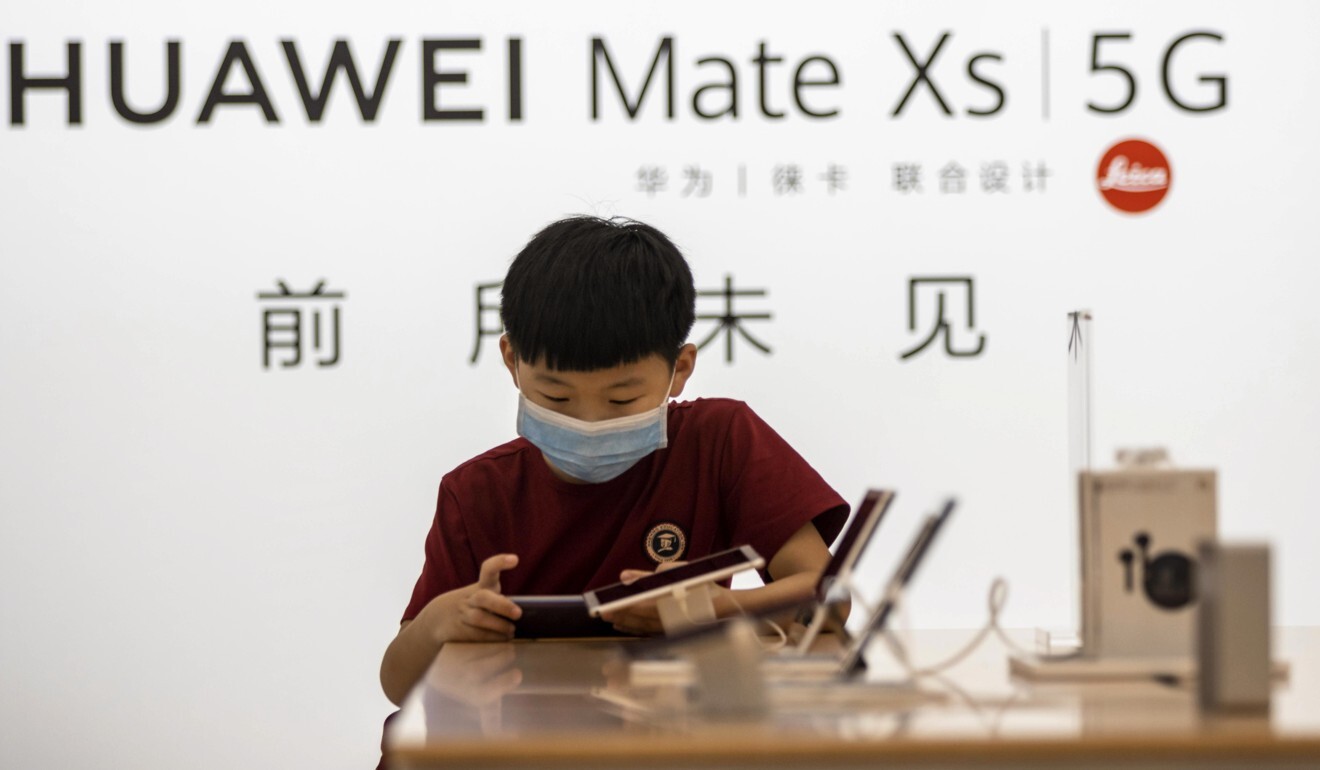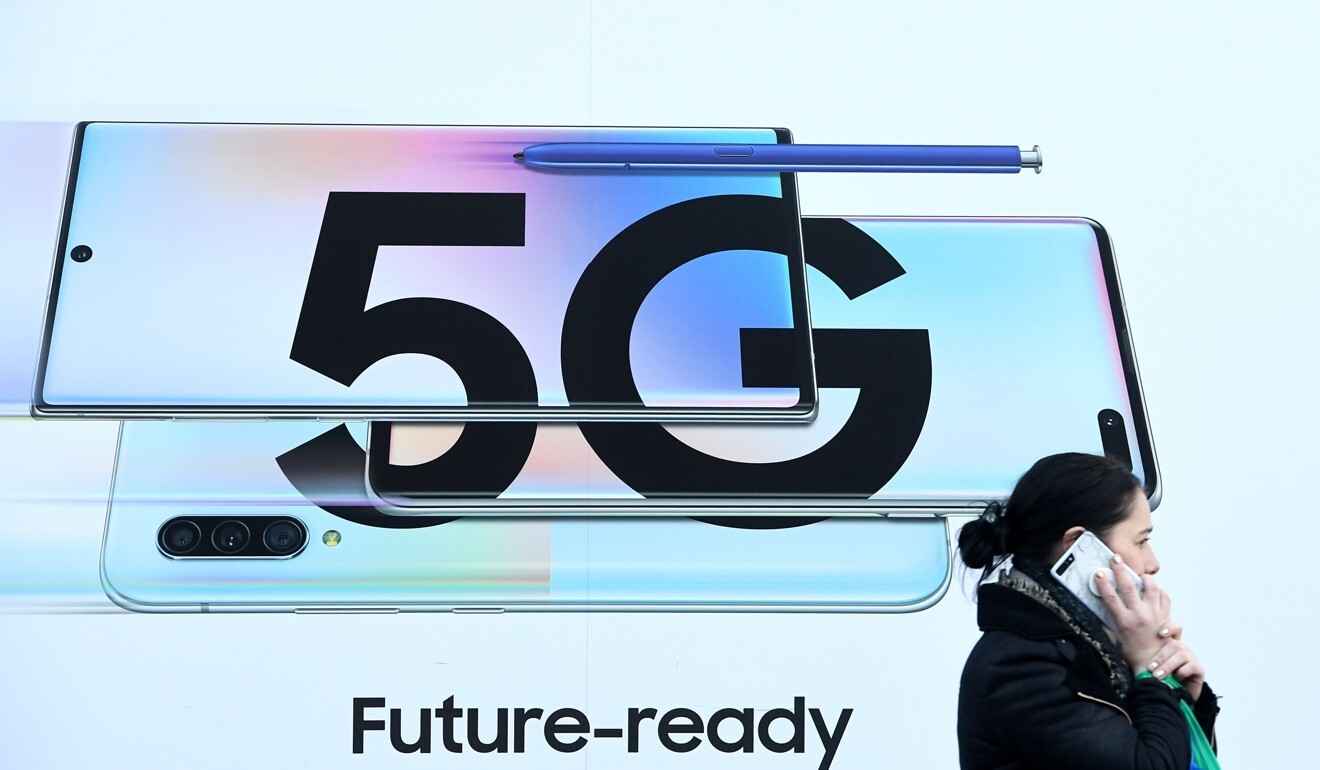
Why Huawei’s founder is sticking with premium smartphones even as sales decline amid US sanctions
- Huawei founder Ren Zhengfei said that Huawei is willing to transfer 5G technology but it will never give up its terminal devices business
- Analysts say that terminals, or connected devices, play an important role in Huawei’s long-term strategy
Last week Ren Zhengfei, the founder and CEO of 5G technology leader Huawei Technologies Co, said the company would still be willing to “transfer” its 5G technology but will never give up its smartphone business.
“We can transfer 5G technology, but we will never sell our terminal [devices] business,” Ren said during a media round table last Tuesday.
Ren made the statement despite sales of its smartphones – which he described as “terminal devices” because they connect to the network – being on a downward spiral since the US government introduced trade sanctions barring the company from obtaining US technology.
Regardless, Huawei has said it remains committed to its premium smartphones. Indeed, analysts say they are an integral part of Huawei’s overall business.
“Terminal devices are an important part of Huawei’s strategy in a lot of ways,” said Tarun Pathak, associate director for mobile devices and ecosystem at Counterpoint.
Terminal devices, especially smartphones, help build a strong user base which in turn generates revenue from services, he explained, adding that the best example of this comes from iPhone maker Apple.
Ren describes terminal devices as anything that can be “connected to people or objects”, so the definition also includes radar systems used in driverless cars and Internet of Things (IoT) devices for smart homes.

Terminal is “telco industry lingo” and reflects Huawei’s roots as it has been connecting terminal devices to networks for years, said Bryan Ma, vice-president of devices research at IDC.
An important piece of this puzzle is the company’s Harmony operating system which first received attention in August 2019, about three months after the US put Huawei on the Entity List that barred it from shipping Google apps and services on new products, and from buying US components.
Harmony OS was not just designed for phones – it can be used with many other categories of connected devices such as tablets, computers and smart TVs – all made by Huawei. For example, it is being used by more than 20 hardware companies, including traditional home appliances companies such as Midea, Joyoung and Robam Appliances, which have used it to run products such as ovens and smoke exhaust ventilators.
What you need to know about Huawei’s Android alternative, Harmony OS
Huawei also wants to provide the communications equipment and software required for smart vehicles and has created an Intelligent Automotive Solutions platform, dubbed Huawei HI, powered by HarmonyOS.
“To keep its connected ecosystem strategy alive and kicking, Huawei needs to keep its terminal business alive – at least in China, the world’s largest market,” said Pathak, adding that success at home could be translated to other countries with the help of Harmony OS.
The impact is not limited to smartphones. Huawei’s chip problem is a threat to most of the products in its terminal business, spanning consumer electronics, 5G and automobile communication systems, because they all rely on a raft of different chip products that Huawei cannot currently produce in-house.

“I think the chip drain is being felt through the entire spectrum of its terminal businesses,” said Roger Sheng, vice-president and semiconductor analyst with advisory firm Gartner.
Huawei still faces “problems on 5G module [chips],” according to a sales manager at Quectel Wireless, a Chinese telecoms company that uses 5G chips designed by Huawei’s chip design unit HiSilicon.
Huawei will also have to keep an eye on US government policies to maintain its product competitiveness and supply chain stability, said Pathak. The ecosystem strategy can be difficult to sustain with declining hardware sales, he noted.
“If the US government takes a more diplomatic stance towards Chinese companies, including Huawei, then Huawei will have a chance to survive, especially on the terminal devices side, and will have enough volume to keep moving by securing access to components,” Pathak said.
Huawei founder says Meng Wanzhou case a ‘political manoeuvre’ by US
Huawei’s consumer electronics group, which includes smartphones, contributed to 54 per cent of its 2019 revenue and was the fastest growing business segment, according to the company’s most recent annual report. However, products defined as “terminal devices” are not broken out by revenue and could include devices from any of its three business groups.
However, Ren said last week: “We think our new business development can offset the decrease in revenue in our smartphone business this year.”


